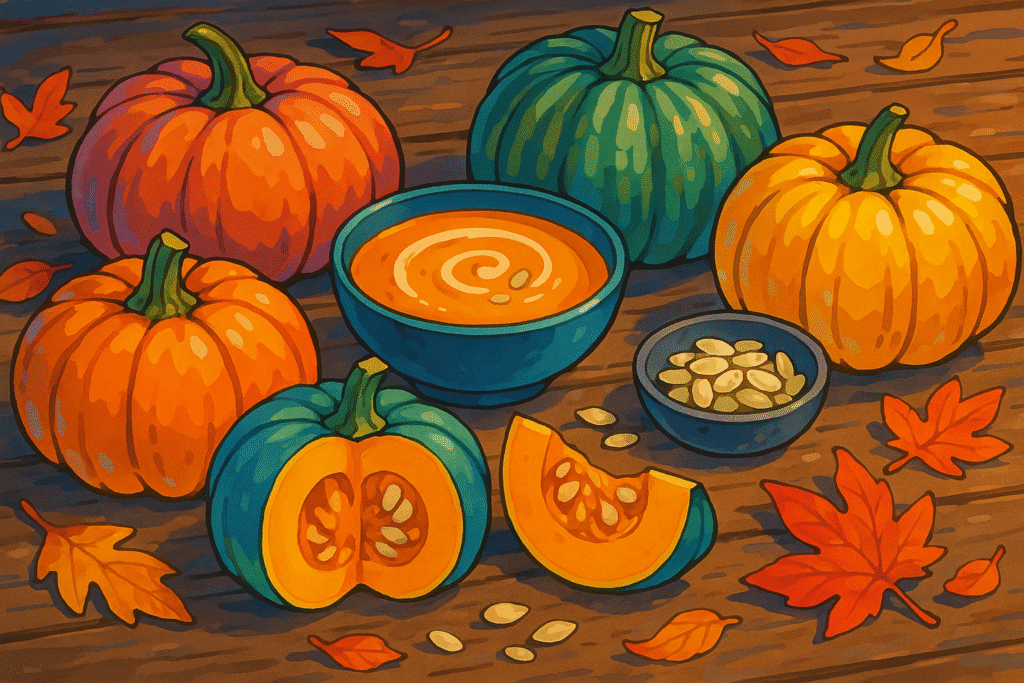Pumpkin (Cucurbita (pepo / maxima / moschata ))

About Pumpkin
Pumpkins are large, round squashes with vibrant orange flesh and a mild, sweet flavor. Often associated with autumn, they’re actually culinary chameleons — fit for savory stews, sweet pies, spiced lattes, and roasted seeds.
Beyond the Jack-o’-lantern, pumpkin is global, hearty, and full of personality.
The History of Pumpkin
Pumpkins were first domesticated in Mesoamerica over 7,500 years ago — making them one of the oldest known cultivated plants. Indigenous communities grew them alongside beans and corn in the “Three Sisters” agricultural model.
They spread across the world after European colonization, eventually gaining symbolic status in American harvest festivals and Halloween traditions.
The Science of Pumpkin
Pumpkin is high in beta-carotene, which converts to vitamin A, supporting skin and eye health. It also contains vitamin C, fiber, and potassium.
The seeds — or pepitas — are rich in magnesium, zinc, and healthy fats.
The Geography of Pumpkin
Pumpkins grow well in temperate to warm climates and are cultivated globally — especially in the U.S., China, India, and Mexico.
They’re used in Indian curries, Italian risottos, Thai soups, and Peruvian stews — not just for decoration, but serious nutrition and flavor.
Varieties of Pumpkin
Sugar Pie
Small, sweet, and smooth-fleshed. Perfect for pies and roasting.
Jack-O’-Lantern
Grown for carving — stringier and less flavorful.
Kabocha
Japanese pumpkin with dense, sweet flesh. Great for tempura and soups.
Rouge Vif d’Étampes
Also known as Cinderella pumpkin. French heirloom with vibrant red-orange skin and sweet, creamy flesh.
Butternut (technically a squash)
Sweet, nutty, and often sold as pumpkin in purées. Excellent for soups.
FAQs All your questions about Pumpkin: answered
Can you eat carving pumpkins?
Technically yes, but they’re watery and bland. Stick with cooking varieties for flavor.
Are pumpkin seeds healthy?
Very — they’re rich in protein, zinc, magnesium, and healthy fats.
Is canned pumpkin really pumpkin?
Often it’s butternut squash or a blend. Still delicious and nutritious.
What’s the best way to cook pumpkin?
Roasting brings out its sweetness. Purée for soups, curries, or baked goods.